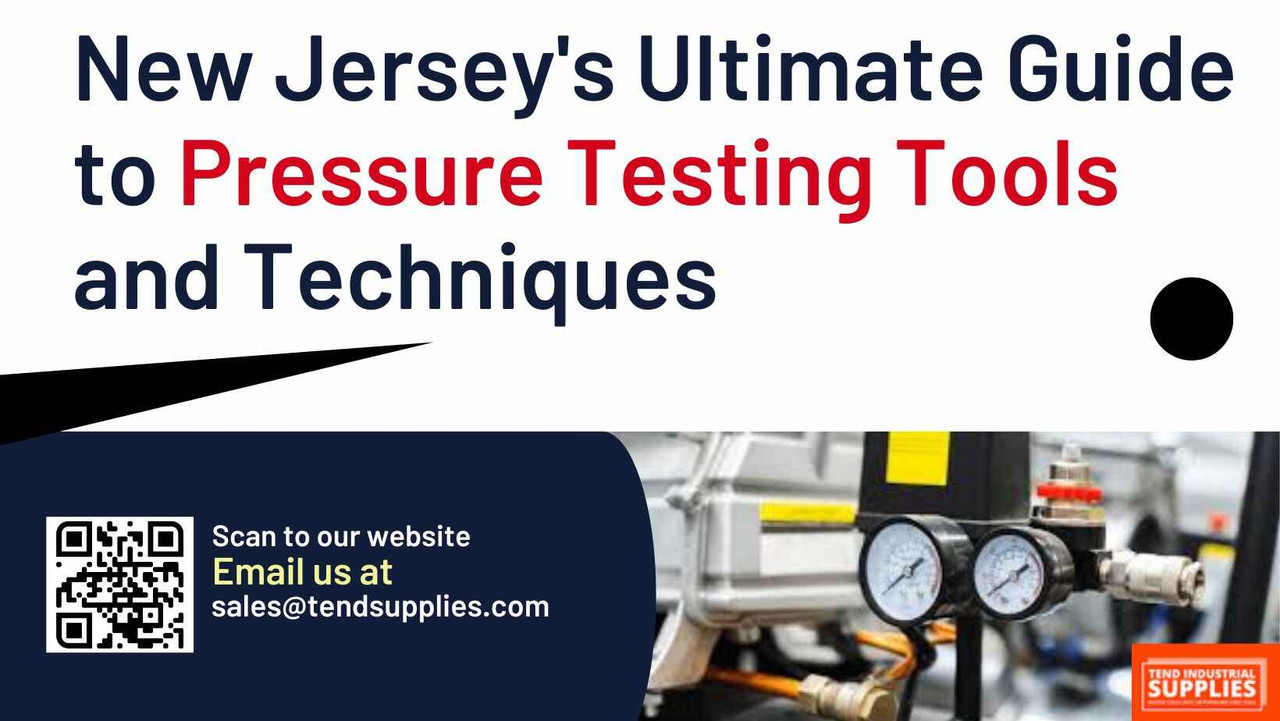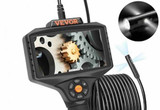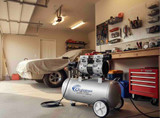New Jersey's Ultimate Guide to Pressure Testing Tools and Techniques
Key Takeaway
Understanding and implementing proper pressure testing procedures is crucial for maintaining safety, compliance, and operational efficiency in New Jersey's industrial landscape. By mastering the tools and techniques outlined in this guide, professionals can significantly reduce the risk of equipment failure, prevent costly downtime, and ensure the longevity of critical infrastructure.
Introduction
Pressure testing is a critical process in various industries, ensuring the safety, reliability, and efficiency of equipment and systems. In New Jersey, a state known for its robust manufacturing sector, bustling construction industry, and extensive infrastructure, the importance of pressure testing cannot be overstated. From ensuring the integrity of pipelines to verifying the safety of industrial equipment, pressure testing plays a vital role in maintaining the state's industrial and economic prowess.
This comprehensive guide explores pressure testing, the tools, techniques, and best practices essential for professionals in New Jersey. Whether you're a seasoned engineer, a quality control specialist, or a business owner looking to ensure compliance with safety standards, this guide will provide valuable insights into the intricate world of pressure testing.
Types of Pressure Testing
Pressure testing encompasses various methodologies, each suited to specific applications and safety requirements. In New Jersey, the following types of pressure testing are commonly employed:
1. Hydrostatic Testing
Hydrostatic testing involves filling a system or component with a liquid, typically water, and pressurizing it to check for leaks or structural weaknesses. This method is widely used in New Jersey for testing pipelines, pressure vessels, and storage tanks.
Key benefits:
- Safer than pneumatic testing due to the incompressibility of liquids
- Highly effective in detecting even minor leaks
- Preferred method for high-pressure systems
2. Pneumatic Testing
Pneumatic testing uses compressed air or inert gases to pressurize systems. While potentially more dangerous than hydrostatic testing due to the compressibility of gases, it's essential for systems that cannot be filled with liquids or where complete drying after testing is impractical.
Applications:
- Low-pressure systems
- Gas pipelines
- Aerospace components
3. Leak Detection Testing
This specialized form of testing focuses on identifying and locating leaks in systems. In New Jersey's diverse industrial landscape, leak detection is crucial for maintaining environmental compliance and operational efficiency.
Techniques include:
- Bubble testing
- Helium leak detection
- Ultrasonic leak detection
4. Other Specialized Types
- Ultrasonic Testing: Uses high-frequency sound waves to detect flaws in materials.
- Dye Penetrant Testing: Applies a visible or fluorescent dye to detect surface-breaking flaws.
Pressure Testing Tools
To conduct effective pressure tests, professionals in New Jersey rely on a variety of specialized tools and equipment. Understanding these tools is essential for anyone involved in pressure testing operations.
1. Pressure Gauges
Pressure gauges are fundamental instruments in any pressure testing setup. They provide real-time readings of the pressure within a system.
Types:
- Analog gauges
- Digital gauges
- Differential pressure gauges
2. Pressure Transducers
These electronic devices convert pressure into an electrical signal, allowing for precise measurements and data logging.
Benefits:
- High accuracy
- Remote monitoring capabilities
- Integration with digital systems
3. Pressure Regulators
Pressure regulators control and maintain the desired pressure level during testing, ensuring safety and consistency.
Features to consider:
- Pressure range
- Flow capacity
- Material compatibility
4. Pump Sets
Pump sets are used to pressurize systems for hydrostatic testing. In New Jersey, where large-scale industrial operations are common, high-capacity pump sets are often required.
Key considerations:
- Flow rate
- Maximum pressure output
- Power source (electric, diesel, etc.)
5. Leak Detectors
Specialized leak detection equipment is essential for identifying and locating leaks in pressurized systems.
Common types:
- Ultrasonic leak detectors
- Helium mass spectrometers
- Thermal imaging cameras
6. Other Essential Equipment
- Test plugs and seals
- Pressure relief valves
- Data acquisition systems
- Personal protective equipment (PPE)
Pressure Testing Techniques
Mastering pressure testing techniques is crucial for professionals in New Jersey's industrial sector. Here's a step-by-step overview of common pressure testing procedures:
Hydrostatic Testing Procedure
- System Preparation:
- Isolate the system and remove all air
- Fill the system with the test liquid (usually water)
- Pressurization:
- Gradually increase pressure to the specified test level
- Monitor pressure gauge readings
- Hold Period:
- Maintain test pressure for the required duration
- Observe for pressure drops or visible leaks
- Depressurization and Inspection:
- Slowly release pressure
- Conduct a thorough visual inspection
Pneumatic Testing Procedure
- Safety Precautions:
- Ensure proper safety measures due to the compressibility of gases
- Use appropriate PPE and establish a safety perimeter
- System Preparation:
- Seal all openings and install pressure gauges
- Introduce the test gas (usually compressed air or nitrogen)
- Pressurization:
- Increase pressure in stages, checking for leaks at each stage
- Reach the specified test pressure
- Leak Detection:
- Apply soap solution to joints and connections
- Look for bubbles indicating leaks
- Depressurization:
- Gradually release pressure in a controlled manner
Safety Guidelines and Precautions
- Always follow OSHA and industry-specific safety standards
- Use properly calibrated and maintained equipment
- Never exceed the maximum allowable working pressure (MAWP) of the system
- Ensure proper training for all personnel involved in pressure testing
Best Practices for Accurate Results
- Conduct tests under stable temperature conditions
- Allow sufficient time for pressure stabilization
- Use high-quality, properly calibrated measuring instruments
- Document all procedures and results thoroughly
Pressure Testing Certifications and Standards
In New Jersey, adherence to national and international standards is crucial for ensuring the quality and reliability of pressure testing procedures.
National and International Standards
- ASME Boiler and Pressure Vessel Code: The American Society of Mechanical Engineers (ASME) provides comprehensive guidelines for the construction and testing of pressure vessels.
- API Standards: The American Petroleum Institute (API) offers standards specific to the oil and gas industry, including pressure testing requirements for pipelines and storage tanks.
- ASTM International: ASTM provides standards for material testing, including pressure testing methods for various materials and components.
Certification Programs
- ASNT Certification: The American Society for Nondestructive Testing offers certifications for professionals in various testing methods, including pressure testing.
- API Individual Certification Programs: Certifications specific to pressure equipment inspection and testing in the petroleum and petrochemical industries.
- NBBI Commissions: The National Board of Boiler and Pressure Vessel Inspectors offers commissions for inspectors involved in pressure vessel and boiler testing.
Pressure Testing Services in New Jersey
New Jersey boasts a robust ecosystem of companies offering specialized pressure testing services. When choosing a service provider, consider the following factors:
- Experience and expertise in your specific industry
- Range of testing capabilities and equipment
- Compliance with relevant standards and regulations
- Quality of reporting and documentation
- Safety record and insurance coverage
Case Studies
Case Study 1: Pipeline Integrity Verification
A major natural gas pipeline company in New Jersey implemented a comprehensive hydrostatic testing program to verify the integrity of its aging pipeline network. The testing revealed several weak points that were promptly repaired, preventing potential leaks and ensuring the safety of surrounding communities.
Key Outcomes:
- Identified and addressed potential failure points
- Improved overall system reliability
- Enhanced public safety and environmental protection
Case Study 2: Pressure Vessel Certification
A chemical manufacturing plant in Newark required certification of its high-pressure reactors. Through rigorous pressure testing and analysis, the facility was able to:
- Verify the structural integrity of critical equipment
- Obtain necessary certifications for continued operation
- Optimize maintenance schedules based on test results
These case studies highlight the critical role of pressure testing in maintaining safety, compliance, and operational efficiency across New Jersey's diverse industrial landscape.
FAQs
1. How often should pressure testing be performed?
The frequency of pressure testing depends on various factors, including the type of equipment, industry regulations, and operational conditions. Generally, critical systems should undergo annual testing, while less critical components may be tested every 2-5 years. Always consult industry-specific guidelines and regulations for precise requirements.
2. What are the main differences between hydrostatic and pneumatic testing?
Hydrostatic testing uses incompressible liquids and is generally safer for high-pressure applications. Pneumatic testing uses compressible gases and is suitable for systems that cannot be filled with liquids. Hydrostatic testing is more effective at detecting small leaks, while pneumatic testing can be more practical for certain applications.
3. Are there any environmental concerns associated with pressure testing?
Yes, environmental considerations are important in pressure testing. When using water for hydrostatic testing, proper disposal of test water is crucial to prevent contamination. For pneumatic testing, the release of compressed air or gases should be controlled to minimize noise pollution and potential atmospheric impacts. Always follow local environmental regulations and best practices.
4. What qualifications are required to perform pressure testing in New Jersey?
Qualifications vary depending on the specific industry and type of testing. Generally, technicians should have relevant certifications from organizations like ASNT, API, or NBBI. Additionally, they should be familiar with New Jersey state regulations and industry-specific standards. Ongoing training and certification renewals are typically required to stay current with evolving technologies and regulations.
5. How can I ensure the accuracy of pressure testing results?
To ensure accurate results, use properly calibrated equipment, follow standardized procedures, and maintain consistent environmental conditions during testing. Regular equipment maintenance, thorough documentation, and adherence to industry standards are also crucial. Consider using third-party verification for critical tests to ensure impartiality and reliability of results.
Conclusion
Pressure testing is a critical aspect of ensuring safety, reliability, and compliance across New Jersey's diverse industrial landscape. By understanding the tools, techniques, and best practices outlined in this guide, professionals can effectively mitigate risks, optimize operations, and maintain the highest standards of quality and safety.
As technology and regulations continue to evolve, staying informed and up-to-date with the latest developments in pressure testing is essential. Regular training, certification, and investment in advanced testing equipment will help New Jersey's industries remain at the forefront of safety and efficiency.
For all your pressure testing equipment needs and expert guidance, turn to Tend Industrial Supplies. We offer a comprehensive range of high-quality testing tools, accessories, and personal protective equipment to support your pressure testing operations.
Visit our website at tendsupplies.com to explore our product catalog and learn more about our services. For personalized assistance and expert advice, contact our team at sales@tendsupplies.com.







